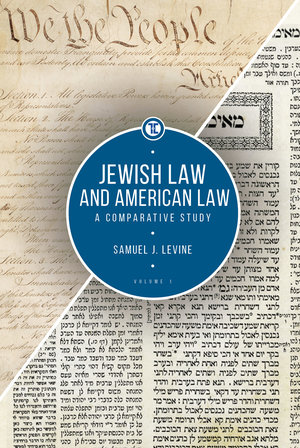
Teshuva: A Look at Repentance, Forgiveness, and Atonement in Jewish Law and Philosophy and American Legal Thought
Samuel J. Levine
Photo of red flowers by FanDeLy (Pixabay CC)
This article is part of our “Religious Reflections on Forgiveness in Law” series.
If you’d like to check out other articles in this series, click here.
This essay is excerpted from Samuel J. Levine, Teshuva: A Look at Repentance, Forgiveness and Atonement in Jewish Law and Philosophy and American Legal Thought, 27 Fordham Urb. L.J. 1677 (2000), reprinted in 2 Samuel J. Levine, Jewish Law and American Law: A Comparative Study 205 (2018).
Introduction

In his contribution to an important UCLA Law Review symposium, Professor Stephen Garvey introduced and developed the possibility of viewing “punishment as atonement.”1 See Stephen P. Garvey, Punishment as Atonement, 46 UCLA L. Rev. 1801 (1999). Recognizing that the concept of atonement “sounds religious,” Garvey insisted and set out to demonstrate that “atonement makes perfectly good sense independent of religion.” Nevertheless, Garvey acknowledged that “religion is one place where you’ll find atonement’s roots” and identified St. Anselm’s eleventh century work as an early example of a theological discussion of atonement. In further discussions of “theological atonement,” Garvey cited not only Christian sources but also, briefly, Jewish sources. This essay aims to offer a more detailed exploration of the concept of teshuva in Jewish law and philosophy. Though often translated as “repentance,” the Hebrew term teshuva is a derivation of the Hebrew root for returning, highlighting the purpose and dynamics of a process through which humans are able to renounce and repair the improper actions that have led them astray, thereby returning to God and to their own true selves. Jewish theology considers it apparent that human beings are, by their very nature, fallible and incapable of avoiding all sin,2 See 1 Kings 8:46; Ecclesiastes 7:20; Psalms 103:3.and thus, through the possibility—indeed the obligation—of teshuva, God provides humans a means of achieving atonement for wrongdoings.3 See, e.g., Deuteronomy 30:2-3; Isaiah 1:18; 43:25, 44:22.
Indeed, teshuva has continuously occupied a central place in Jewish thought, from the Bible and the Talmud to the legal and philosophical writings of medieval and modern scholars. These sources portray a complex process consisting of several steps required of the penitent individual, a process strikingly similar to that which Garvey describes. Accordingly, this essay looks to further develop some of Garvey’s ideas by closely analyzing teshuva, which stands as an illuminating conceptual analogue to Garvey’s vision of secular atonement.
The Obligations of the Wrongdoer
In Jewish thought, the process of teshuva is often described as encompassing four stages, similar to Garvey’s process of secular atonement. Although the precise enumeration and identification of these stages varies among scholars of Jewish law, the general formulation of the process of teshuva contains essentially the same elements listed by Garvey: remorse, resolution not to repeat the wrongdoing, confession, and changing one’s ways.
Repentance
Garvey relies on a definition of “repentance” as “the remorseful acceptance of responsibility for one’s wrongful and harmful actions, the repudiation of the aspects of one’s character that generated the actions, the resolve to do one’s best to extirpate those aspects of one’s character, and the resolve to atone or make amends for the [wrong and] harm that one has done.” In Jewish law and philosophy, remorse for a wrong, coupled with the resolution not to repeat the wrongdoing, is likewise essential to any possibility of atonement. In particular, as Maimonides writes in his Code of Law, these elements of repentance are prerequisites to effective confession. Words of apology that are not accompanied by sincere feelings of regret and resolve to change remain empty, bereft of the crucial element that lends them meaning.
Apology

The next stage Garvey delineates, “confession,” serves as “the wrongdoer’s public expression of his repentance, whereby he openly acknowledges his wrongdoing and simultaneously disowns it.” In short, an apology “embraces” guilt and then “expels” it. Vidui—confession, or apology—likewise serves an indispensable function in the process of teshuva. Through vidui, the individual unequivocally accepts responsibility for wrongdoing, at the same time displaying an outward expression of remorse and a willingness to make amends. Maimonides describes the essential elements of vidui, which include: language demonstrating a clear admission of having committed a wrong against another; precise articulation of the wrong; a statement of strong remorse; and a declaration of a desire not to repeat the wrong. As Rabbi Joseph B. Soloveitchik notes, one of the most difficult truths that a person must face involves the acknowledgment of having committed a wrongful act. Through the verbal expression of vidui, rather than continuing to evade responsibility by deluding others and possibly one’s self, the individual admits to the truth of the wrongdoing, accordingly facilitating the process of teshuva.
Reparation and Penance
In Garvey’s depiction of the process of atonement, it is incumbent upon the wrongdoer, after feeling remorse and, through apology, verbally expressing such feelings, to “make amends.” Because reparation, in the form of restitution or compensation, “makes amends for the harm the wrongdoer does, but not for the wrong he has done . . . the wrongdoer must submit to penance,” which Garvey defines as “a self-imposed punishment, i.e., self-imposed hardship or suffering, which completes the process of expiation and finally rids the wrongdoer of his guilt.” Significantly, Garvey explains, “the wrongdoer cannot restore his own moral standing unless he submits to punishment.”
Rabbi Soloveitchik likewise establishes a framework for analyzing the concept of penance based on the premise that the commission of a wrong results in two interrelated, but distinct, consequences. On one level, in relation to the victim, a wrongful act produces liability on the part of the offender; to counteract this culpability, the individual must engage in reparation, through the payment of restitution or compensation. Yet, Rabbi Soloveitchik also examines the spiritual defilement of the wrongdoer caused by the impurity of sin. As in Garvey’s system, in the final stages of teshuva, Jewish law demands not only reparation but, more importantly, penance, in the form of fundamental change in the individual’s mode of behavior. To erase fully the taint of the wrongdoing and thus to obtain a restored place in the community, an individual must engage in a more extensive form of spiritual purification or expiation, involving self-imposed forms of hardship that relate to and address directly the particular nature of the act committed. Thus, an individual truly regains and returns to the state of undefiled spirituality lost as a consequence of the wrongdoing.
The Obligations of the Wronged: Reconciliation
Once the wrongdoer has successfully completed expiation and the guilt has thereby been removed, it is then time for the victim to complete the process of atonement through forgiveness. According to Garvey, forgiveness “achieves the reconciliation of wrongdoer and wronged.” Just as expiation “enables an offender to purge the taint of guilt,” expiation coupled with forgiveness “enables the victim to overcome his resentment.” Ultimately, Garvey considers forgiveness “one of th[e victim’s] responsibilities.” Indeed, “[i]t reflects a moral failure . . . for victims to withhold forgiveness unreasonably from offenders who have done all they can do to expiate their guilt.” Still, for Garvey, forgiveness is not utilateral. He argues that a “victim may . . . legitimately withhold forgiveness until the wrongdoer has paid his debt in full, i.e., until the wrongdoer has not only repented but also apologized, made reparations, and endured his penance.

A similar approach to the dynamics of forgiveness is found in Jewish thought. Maimonides explains that the wrongdoer must repeatedly appease the victim and ask for forgiveness. If the victim initially refuses the request, the wrongdoer must continue to undertake a number of attempts to obtain forgiveness. To be deserving of forgiveness, the wrongdoer must demonstrate a sincere hope for reconciliation, and is expected to make amends for the harms he caused. Once he has done so, however, Jewish law places the burden on the victim to grant forgiveness, and Maimonides emphasizes that a victim should be receptive to the wrongdoer’s genuine attempts at reconciliation and atonement. Indeed, in the powerful formulation of Maimonides, if the victim continues to deny forgiveness, the wrongdoer is released from further action, as the victim is then deemed to be the sinner.
Conclusion
Despite the prominent position it has held for millennia in religious and moral thinking, the atonement model is relatively new to American legal theory. Professor Garvey’s depiction and analysis of the process of atonement offers one possibility for reintegrating these concepts into American law; Professor Martha Minow’s recent book offers another. Ultimately, however, any application of a theory of atonement to the American legal system will encounter a number of problems and objections. Still, as Garvey explained, it is obvious to many observers that “the prevailing models of punishment . . . fall short.” New approaches–even ones that turn the conventional wisdom on its head–may well be warranted. Jewish law, which balances simultaneous concerns for restitution, rehabilitation, and redemptive repentance for wrongdoing, offers a model worthy of serious consideration.

Samuel J. Levine is Professor of Law and Director of the Jewish Law Institute at Touro Law School. He has published two books and more than fifty law review articles and book chapters, and he has lectured throughout the United States on the subjects of legal ethics, Jewish law, criminal law, law and religion, and constitutional law.
Recommended Citation
Levine, Samuel J. “Teshuva: A Look at Repentance, Forgiveness, and Atonement in Jewish Law and Philosophy and American Legal Thought.” Canopy Forum, February 25, 2020. https://canopyforum.org/2020/02/25/teshuva-a-look-at-repentance-forgiveness-and-atonement-in-jewish-law-and-philosophy-and-american-legal-thought-by-samuel-j-levine/

